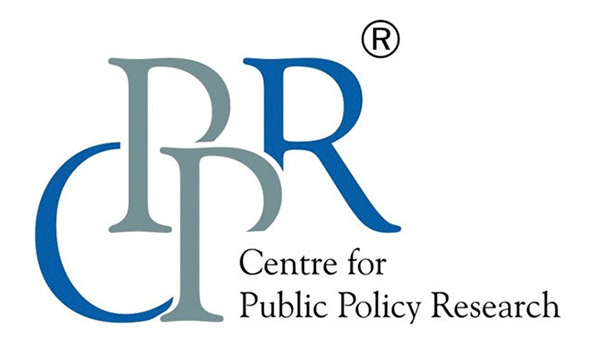Articles

‘Limit car use, rely on public transport’ ; The Hindu, March 10, 2017
March 10, 2017
Analysis of UP Election 2017
March 10, 2017Verdict 2017 – A Pre-poll Analysis
The Assembly elections in Uttar Pradesh (UP), Uttarakhand, Punjab, Manipur and Goa that concluded on March 8 would be a crucial litmus test for major political parties in deciding their future status and identity in Indian polity. Almost one-fifth of India comprising around 17 crore electorate in 102 Lok Sabha and 690 Assembly constituencies cast their votes.
These elections, in many respects, will be a referendum to the policies and programmes of the National Democratic Alliance (NDA) Government. Perhaps, it will be the first acid test at the ballot box for the Prime Minister’s demonetisation drive of November 2016, which according to the BJP, would be endorsed by the poor and the middle class cutting across castes and communities, thereby helping the party to gain currency beyond its traditional vote bank. If the assessment of the party goes awry and the demonetisation drive misfires in the impending polls, the NDA/BJP would find itself in a shaky position leading to the slowdown of the aggressive reforms or policies of the government. Such an outcome would adversely affect the poll prospects of the BJP in its citadels like Gujarat, Madhya Pradesh, Rajasthan and Chhattisgarh, which are going to polls during the last part of 2017 and in 2018. This may sharpen intra-party squabbles and differences creating discomfiture for the NDA/BJP during the crucial election to the post of the President of India.
Besides demonetisation, issues like intolerance against minorities and Dalits at the instance of fringe elements in Sangh Parivar bodies, cross-border terrorism and Uri–Pathankot attacks, strains in domestic economy and scandals and scams involving ruling and opposition parties may prominently figure in the forthcoming elections. The NDA/BJP is hopeful of having changed the electoral wave to its advantage by highlighting the welfare and developmental programmes undertaken by the Central Government.
On the other hand, these elections are a life and death battle for the Congress. Having lost power in Kerala, Assam and Arunachal Pradesh, the elections offer an opportunity to the Congress to arrest the slide in its fortune. The party anticipates a backlash of voters against the NDA/BJP on issues like demonetisation, intolerance and internal security failures. If the strategy of the party fails to click in the elections, the grand old Congress Party, at the age of 132, will face a serious existential crisis.
While the BJP and the Congress are keeping their fingers crossed, the impending poll results are crucial for the Aam Aadmi Party (AAP). If the party, which is in power in Delhi performs well in the elections, especially in Punjab and Goa, its potential as a national party cannot be undermined. If the party flops, mainly due to its internal differences and contradictions as manifest in Punjab and elsewhere, its ambitions to emerge as a national alternative to the BJP and the Congress would be sealed. The election results would also decide the fate of parties like the Samjwadi Party (SP) and the Bahujan Samaj Party (BSP), which were virtually decimated in their home turf in the 2014 Lok Sabha elections.
More significantly, the outcome of the elections would have a decisive impact on the image and popularity of Prime Minister Narendra Modi, Congress Vice President Rahul Gandhi, Delhi Chief Minister (CM) Aravind Kejriwal and Uttar Pradesh satraps like Mulayam Singh Yadav, Akhilesh Yadav and Mayawati, who are the key players of national politics. Hence, these Assembly elections can be better described as a semi-final to the 2019 Lok Sabha elections.
The crucial question is to what extent the NDA/BJP can retain its 2014 impact among the voters. If it succeeds at marginally sustaining the ‘Modi Magic’ of 2014, the NDA/BJP is posed to repeat its impressive performance in states like UP, Uttarakhand and Goa, where it has a clear lead in more than two-third of the Assembly constituencies, on the basis of the last Lok Sabha poll results. The Congress was better placed in the states of Manipur and Punjab in respect of the lead position in the Assembly constituencies (Refer Table 1).
If we analyse the poll performance of major parties in the 2012 Assembly elections, the NDA/BJP was in a sticky wicket in these states, except in Goa. Majority of the voters in the country do not pledge allegiance towards any political party or alliance, but are decisively influenced by regional issues or political developments during the elections. Thus, the analysis of regional politics is a prerequisite to arrive at a proper perspective on election trends.
*K V Thomas is a retired Assistant Director of the Intelligence Bureau and a former Public Policy Scholar of The Hindu Centre for Politics & Public Policy. Views Expressed by the author is personal and does not reflect that of CPPR.
K V Thomas is Senior Fellow at CPPR. He has over 36 years of distinguished service in the Intelligence Bureau (Ministry of Home Affairs) of India where he rose to become the Associate Director. He can be contacted at [email protected]


